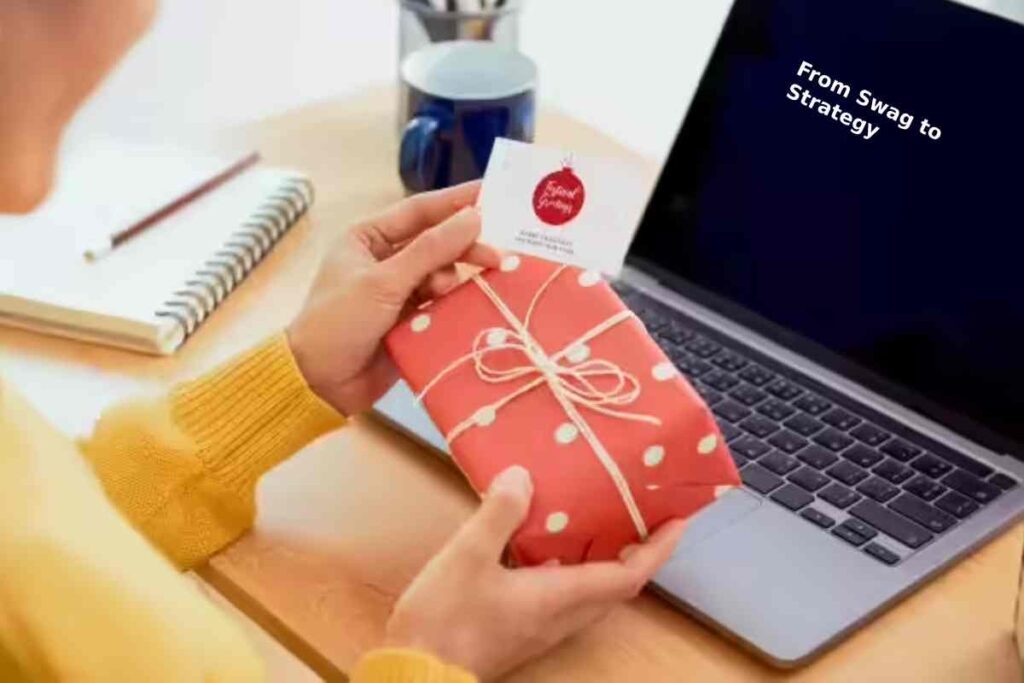Introduction: The Power of Swag
Pens, tote bags, mugs, T-shirts—nearly everyone has a collection of branded items tucked away at home or in the office. But promotional products, often dismissed as “swag,” aren’t just freebies. They’re powerful marketing tools with the potential to create lasting impressions, strengthen brand loyalty, and even influence purchasing decisions.
The U.S. promotional products industry hit $26.78 billion in sales in 2024, according to PPAI. That’s not small change. From sustainable items to innovative tech giveaways, brands are beginning to realize that promotional products are more than a nice gesture—they’re a measurable strategy.
So how do companies move from handing out swag to using promotional products as part of a serious marketing play? Let’s break it down.
Why Promotional Products Stick With People
Brand Recall That Lasts
Research consistently shows that promotional products outperform many other forms of advertising when it comes to brand recall. The PPAI “Built for Life” study found that nearly 90% of consumers had received a promotional product within the past six months, and 80–90% recalled the brand messaging tied to those items. That kind of memory retention beats most digital ads, which are often forgotten within seconds.
Emotional Connections and Everyday Use
Promotional products aren’t passive. They live in people’s hands, on their desks, and in their daily routines. Among Gen Z, 34% use promotional products weekly and 21% use them daily, according to PPAI’s Gen Z consumer study. For a generation that values authenticity and tangible experiences, physical products make a stronger statement than a fleeting online impression.
Loyalty and Trust
There’s also a behavioral shift. Around 83% of consumers are more likely to do business with a brand after receiving a promo item, according to PPAI. Why? Because these products signal appreciation. A reusable water bottle or eco-friendly tote says, “We care about you.” That builds loyalty in ways discount codes can’t.
From Giveaways to Strategy
Aligning Products With Brand Identity
A promotional item should never feel random. A financial services firm giving away beach balls? Off-brand. But that same firm handing out sleek notebooks or high-quality pens? On-point. The goal is to choose items that align with your brand’s personality and message.
Think of promotional products as an extension of your visual identity—just like your logo, colors, or even standard business card dimensions. Consistency makes your brand memorable.
Case Study: Election Campaigns
Even political campaigns are catching on. In 2024, PPAI reported on the rise of promotional products in elections, noting that branded merchandise influenced voter perception and recall. From buttons to yard signs, these products weren’t just memorabilia—they were strategic tools to reinforce messaging and drive engagement.
Case Study: Trade Shows Done Right
Handing out promo products at a trade show isn’t new. But doing it strategically is. Companies that tie giveaways directly to their trade show marketing strategy see higher engagement. A well-chosen product can draw attendees to a booth, spark conversations, and even encourage social media shares.
ROI: Measuring More Than Smiles
Sales Growth and Spending Patterns
Promotional products aren’t just about “feel good” moments—they deliver measurable returns. In 2024, U.S. sales grew 2.63% year over year, reaching $26.78 billion, according to PPAI. Even more telling: 73% of end buyers purchase promotional products monthly or quarterly, as reported in the PPAI End Buyers study. That steady demand proves their effectiveness as an advertising channel.
Online Growth and Sustainability
The numbers also highlight shifting preferences. Online sales accounted for $6.83 billion, or 25.5% of revenue, showing how e-commerce and customization options are fueling adoption. Meanwhile, sustainable products grew by 20% year over year, totaling $3.69 billion in sales (PPAI). Consumers care about where their items come from, and brands that reflect those values see stronger results.
Beyond Impressions
While impressions—how many people see your logo—are one way to measure success, real ROI goes deeper. Metrics like repeat purchases, referral activity, and brand searches after receiving promo items matter more. For instance, nearly 80% of consumers look up a brand after receiving a promotional product (PPAI). That’s measurable engagement that leads directly to conversions.
Best Practices for Using Promotional Products Strategically
Choose Quality Over Quantity
A cheap pen that doesn’t write? It’ll end up in the trash. A sturdy, stylish notebook? It’ll stay on someone’s desk for months. Longevity equals repeated exposure.
Prioritize Usefulness
Ask yourself: Will this product fit into someone’s life? Practical items—like water bottles, chargers, or tote bags—see more use and, in turn, more brand impressions.
Embrace Eco-Friendly Options
With sustainability becoming a priority, eco-friendly products are no longer optional. Reusable items like bamboo utensils or recycled cotton totes show responsibility and align with consumer values.
Integrate With Broader Campaigns
Promotional products shouldn’t stand alone. Pair them with digital campaigns, events, or loyalty programs. For example, a QR code on a T-shirt can drive people to a landing page, merging offline and online engagement.
Track and Measure
Set clear goals. Is the product meant to increase sign-ups? Drive social shares? Boost store visits? Use tools like surveys, promo codes, or digital tracking to measure outcomes.
Looking Ahead: The Future of Promo
Promotional products aren’t going away. In fact, as digital advertising becomes noisier, tangible brand experiences stand out even more. The key is to think of swag as more than a giveaway. It’s strategy.
Brands that embrace this mindset are the ones that will see promotional products go from “nice to have” to “must-have.” They’ll amplify recall, foster loyalty, and create emotional connections that stick.
Conclusion
Promotional products have moved far beyond free pens and stress balls. They’ve become a core part of marketing strategy—driving recall, loyalty, and measurable ROI. Whether it’s aligning giveaways with brand identity, integrating them into a larger campaign, or choosing eco-friendly options that reflect consumer values, the brands that treat swag as strategy will win.
The next time you pick up a branded tote or sip from a company’s reusable water bottle, remember: it’s not just a gift. It’s marketing at its smartest.

